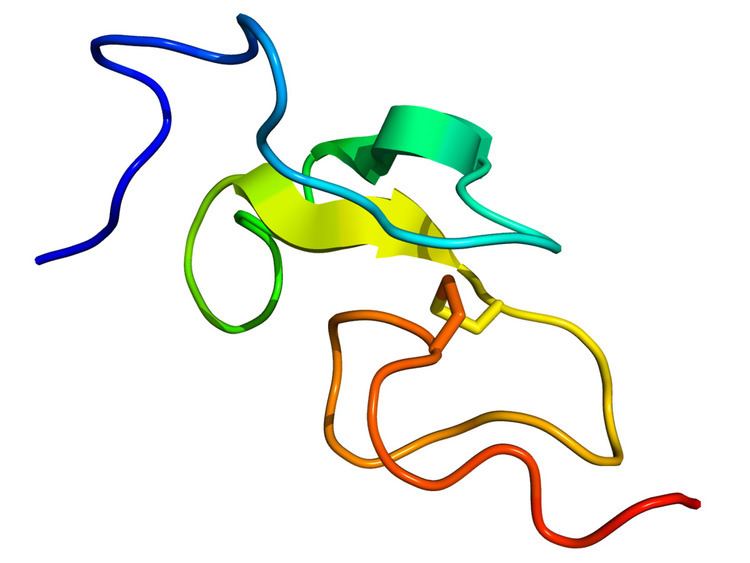Entrez 1950 | Ensembl ENSG00000138798 | |
 | ||
External IDs OMIM: 131530 MGI: 95290 HomoloGene: 1483 GeneCards: EGF | ||
Epidermal growth factor (EGF) is a growth factor that stimulates cell growth, proliferation, and differentiation by binding to its receptor EGFR. Human EGF is a 6-kDa protein with 53 amino acid residues and three intramolecular disulfide bonds.
Contents
EGF was originally described independently as a secreted peptide found in the submaxillary glands of mice and in human urine. EGF has since been found in many human tissues including submandibular gland, parotid gland. Initially, human EGF was known as urogastrone.
Function
EGF [binding to EGFR] results in cellular proliferation, differentiation, and survival.
Salivary EGF, which seems also regulated by dietary inorganic iodine, also plays an important physiological role in the maintenance of oro-esophageal and gastric tissue integrity. The biological effects of salivary EGF include healing of oral and gastroesophageal ulcers, inhibition of gastric acid secretion, stimulation of DNA synthesis as well as mucosal protection from intraluminal injurious factors such as gastric acid, bile acids, pepsin, and trypsin and to physical, chemical and bacterial agents.
Mechanism
EGF acts by binding with high affinity to epidermal growth factor receptor (EGFR) on the cell surface. This stimulates ligand-induced dimerization, activating the intrinsic protein-tyrosine kinase activity of the receptor (see the second diagram). The tyrosine kinase activity, in turn, initiates a signal transduction cascade that results in a variety of biochemical changes within the cell – a rise in intracellular calcium levels, increased glycolysis and protein synthesis, and increases in the expression of certain genes including the gene for EGFR – that ultimately lead to DNA synthesis and cell proliferation.
EGF-family / EGF-like domain
EGF is the founding member of the EGF-family of proteins. Members of this protein family have highly similar structural and functional characteristics. Besides EGF itself other family members include:
All family members contain one or more repeats of the conserved amino acid sequence:
CX7CX4-5CX10-13CXCX8GXRC
Where X represents any amino acid.
This sequence contains 6 cysteine residues that form three intramolecular disulfide bonds. Disulfide bond formation generates three structural loops that are essential for high-affinity binding between members of the EGF-family and their cell-surface receptors.
Interactions
Epidermal growth factor has been shown to interact with epidermal growth factor receptor.
Medical uses
Recombinant human epidermal growth factor, sold under the brand name Heberprot-P, is used to treat diabetic foot ulcers. It can be given by injection into the wound site, or may be used topically. Tentative evidence shows improved wound healing. Safety has been poorly studied.
